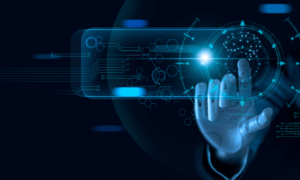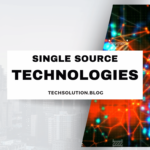Are you seeking a way to leverage technology in today’s fast-paced, evolving business landscape? It is essential for survival and growth. Integrating Critical technology elements into business operations can drastically alter a company’s trajectory.
This article explores the vital technological components shaping business success in the modern era.
What is Critical Technology?
“Critical technology” refers to technologies that are considered vital for a country or region’s economic security, national defence, or societal well-being. These technologies are pivotal not only because they drive progress and competitiveness but also because they have significant implications for public policy, security, and international relations.
The designation of a technology as “critical” often indicates that it holds substantial importance in advancing or safeguarding essential functions in society or industry.
Key Critical Technology Elements
- Hardware Components: This includes semiconductors, microprocessors, sensors, and other electronic components that are fundamental to operating computers, communication devices, and other technological systems. The reliability and security of these components are paramount, as they form the backbone of most modern technologies.
- Software Systems: Critical software systems that manage data, control hardware, and run networks are essential components. This includes operating systems, database management software, and specialized software that controls critical infrastructure like power grids or transportation systems.
- Communication Networks: Infrastructure that supports data transmission, including telecommunications networks, the internet, and other data communication systems, is vital. This encompasses 5G technology, fiber-optic cables, and satellite communication systems that ensure connectivity and information flow.
The Role of Data Analytics

Data analytics is crucial to modern business, science, and technology landscapes. It involves the systematic computational analysis of data or statistics, enabling organizations and individuals to make informed decisions by identifying trends, patterns, and anomalies.
Here’s an exploration of the role of data analytics across various sectors and its impact on decision-making processes.
Applications of Data Analytics
- In the realm of business intelligence, data analytics serves as a cornerstone for strategic planning by helping businesses understand market trends, consumer behaviour, and competitive dynamics, thereby facilitating informed decision-making. It also enhances operational efficiency, as companies can use data to identify inefficiencies and optimize processes, reducing costs and improving productivity.
- In healthcare, data analytics is crucial for predictive analytics, which is used to forecast disease outbreaks, predict patient readmission rates, and assess potential health outcomes, enabling proactive care and management. Additionally, medical researchers rely on data analytics to uncover patterns and insights that can lead to new medical breakthroughs and treatment methodologies.
- The finance and banking sectors leverage data analytics for various critical functions, including risk management through credit scoring, risk assessment, and fraud detection, all of which help mitigate potential losses. Analytics also provide deep insights into customer behaviours, enhancing service delivery, personalizing offers, and improving overall customer satisfaction.
- Analyzing customer data helps companies understand buying patterns and preferences in marketing, which is essential for tailoring marketing strategies to meet consumer demands. Moreover, data analytics is instrumental in measuring the effectiveness of marketing campaigns, allowing companies to optimize their marketing spend and increase the return on investment.
Challenges in Data Analytics
- Data Privacy and Security: Ensuring the privacy and security of data while performing analytics is a significant challenge due to the sensitive nature of information.
- Quality of Data: Poor data quality can lead to incorrect conclusions. Ensuring clean, accurate, and timely data is essential for effective analytics.
- Skill Shortage: There is a high demand for skilled data scientists and analysts. The shortage of experts can hinder the effective implementation of data analytics initiatives.
Pros and Cons of Critical Technology Elements
Certainly! Below is a table highlighting the pros and cons of various critical technology elements:
| Critical Technology Elements | Pros | Cons |
| Data Analytics | – Enables informed decision-making. – Unveils market trends and customer preferences. – Optimizes operations and increases efficiency. | It requires large datasets, which can raise privacy concerns. These can be expensive to implement and maintain. It is dependent on data quality and integrity. |
| Cloud Computing | – Provides scalability and flexibility. – Reduces IT costs by using a pay-as-you-go model. – Enhances collaboration with remote access. | – Potential security vulnerabilities. – Dependence on internet connectivity. – Data sovereignty issues may arise. |
| Cybersecurity | – Protects against data breaches and cyber threats. – Builds trust with customers. – Ensures compliance with data protection laws. | Comprehensive measures can be costly to implement. They require continuous updates and monitoring, and skilled personnel are needed for effective management. |
| Artificial Intelligence (AI) | – Enhances decision-making and automation. – Improves customer service through personalization. – Streamlines operations and reduces human error. | – High initial investment. – Risk of job displacement. – Ethical and privacy concerns with data use. |
| Internet of Things (IoT) | – Increases operational efficiency. – Enables real-time monitoring and data collection. – Supports smart applications and automation. | – Security risks due to increased connectivity. – Can generate overwhelming amounts of data. – Requires significant infrastructure. |
| Blockchain | – Provides secure and transparent transactions. – Reduces fraud and enhances data integrity. – Decentralizes data management. | – Scalability issues. – High energy consumption. – Regulatory uncertainties. |
| 5G Technology | – Offers higher speeds and more reliable connections. – Enables advanced applications like IoT and smart cities. – Improves responsiveness and capacity. | – Infrastructure costs for widespread deployment. – Concerns about radiation exposure. – Limited availability in rural areas. |
What is Cloud Computing Infrastructure?

Cloud computing has fundamentally reshaped how businesses approach IT infrastructure by offering flexible, scalable, and cost-effective solutions.
Here’s a deeper look at how cloud computing impacts business operations:
Scalability and Flexibility
One of the primary advantages of cloud computing is its scalability. Businesses can easily scale their IT resources up or down based on demand without the need for significant capital investments in physical hardware. This flexibility is crucial for coping with varying workload demands and can lead to more efficient use of IT resources.
Accessibility and Collaboration
Cloud computing allows employees to access data and applications from anywhere, anytime, provided they have internet access. This facilitates better collaboration among team members who are in different locations, enhancing productivity and speeding up decision-making processes.
Cost-Effectiveness
With cloud computing, companies shift from capital expenditure (CapEx) to operational expenditure (OpEx). This means they pay only for their IT resources, such as storage space, CPU cycles, or bandwidth, which can significantly reduce upfront costs and ongoing IT maintenance expenses.
Market Adaptability
The agility offered by cloud computing allows businesses to respond more rapidly to market changes. For instance, deploying new applications or scaling existing ones can be done much quicker than if they were constrained by physical infrastructure limitations.
What are Cybersecurity Measures?

As businesses increasingly depend on digital platforms, the importance of cybersecurity cannot be overstated. Here are key components of effective cybersecurity strategies:
Prevention of Unauthorized Access
Implementing strong access controls, such as multi-factor authentication (MFA) and rigorous identity and access management (IAM) policies, helps ensure that only authorized users can access sensitive data. This is a first line of defense against many forms of cyber attacks.
Data Breach Protection
Businesses employ various tools and practices to combat the risks of data breaches. These include firewalls, anti-virus software, and intrusion detection systems (IDS) that monitor network traffic for suspicious activities and potential threats.
Regular Security Audits
Conducting regular security audits and vulnerability assessments can help identify and mitigate security gaps in an organization’s IT infrastructure. These audits are crucial for understanding the effectiveness of existing security measures and pinpointing areas that require improvement.
Compliance and Legal Implications
Adhering to international data protection regulations, such as GDPR in Europe or CCPA in California, is critical. Compliance helps avoid legal consequences and reinforces customer trust by demonstrating a commitment to data security and privacy.
Building Customer Confidence
Effective cybersecurity measures extend beyond protecting an organization’s data. They also play a crucial role in maintaining and building trust with customers. Knowing that a business takes cybersecurity seriously can be a significant factor in a customer’s decision to engage with that business.
Artificial Intelligence and Machine Learning

Artificial Intelligence (AI) and Machine Learning (ML) are transformative technologies that have significantly impacted various industries, enhancing capabilities, improving efficiencies, and opening up new avenues for innovation. Here’s a detailed look at these technologies and their implications:
Artificial Intelligence (AI)
Definition and Scope: Artificial Intelligence (AI) is the simulation of human intelligence in machines. These machines are designed to think like humans and mimic their actions. The term can also be applied to any machine that exhibits traits associated with a human mind, such as learning and problem-solving.
Applications
- Healthcare: AI applications in healthcare include diagnostics, personalized medicine, and patient management systems, where AI algorithms can predict disease progression and assist in treatment planning.
- Finance: AI is used for algorithmic trading, fraud detection, customer service (via chatbots), and risk management.
- Automotive: In autonomous vehicles, AI interprets sensory information to identify appropriate navigation paths, obstacles, and relevant signage.
Challenges
- Ethical concerns: As AI becomes more capable, ethical issues such as privacy, consent, and the potential for bias in decision-making are increasingly under scrutiny.
- Job displacement: AI could automate tasks traditionally done by humans, leading to shifts in employment and requiring significant workforce retraining.
Machine Learning (ML)
Definition and Scope: Machine Learning (ML) is a subset of AI that allows systems to automatically learn and improve from experience without being explicitly programmed. ML focuses on developing computer programs that can access and use data to learn for themselves.
Applications
- E-commerce and Retail: ML algorithms recommend products based on browsing and purchase history, optimizing inventory management based on predictive analyses.
- Speech Recognition: ML is used in voice-activated systems, such as virtual assistants (e.g., Siri, Alexa), which learn and adapt to a user’s voice commands.
- Predictive Maintenance: ML predicts equipment failures before they occur in manufacturing, thus saving costs and preventing downtime.
Challenges
- Data Privacy: ML algorithms require vast amounts of data to learn effectively, raising concerns about data security and the ethical use of personal information.
- Complexity and Interpretability: Some ML models, especially deep learning networks, are “black boxes” due to their opaque decision-making processes.
Final Thoughts
Adopting critical technology elements like data analytics, cloud computing, cybersecurity, AI, and IoT is not just about keeping up with technological trends but is a decisive factor in shaping the success of businesses today. These technologies provide the tools necessary to innovate, compete, and excel in a crowded market. Integrating these key technological elements is not an option but necessary for businesses looking to thrive in the modern economy.



